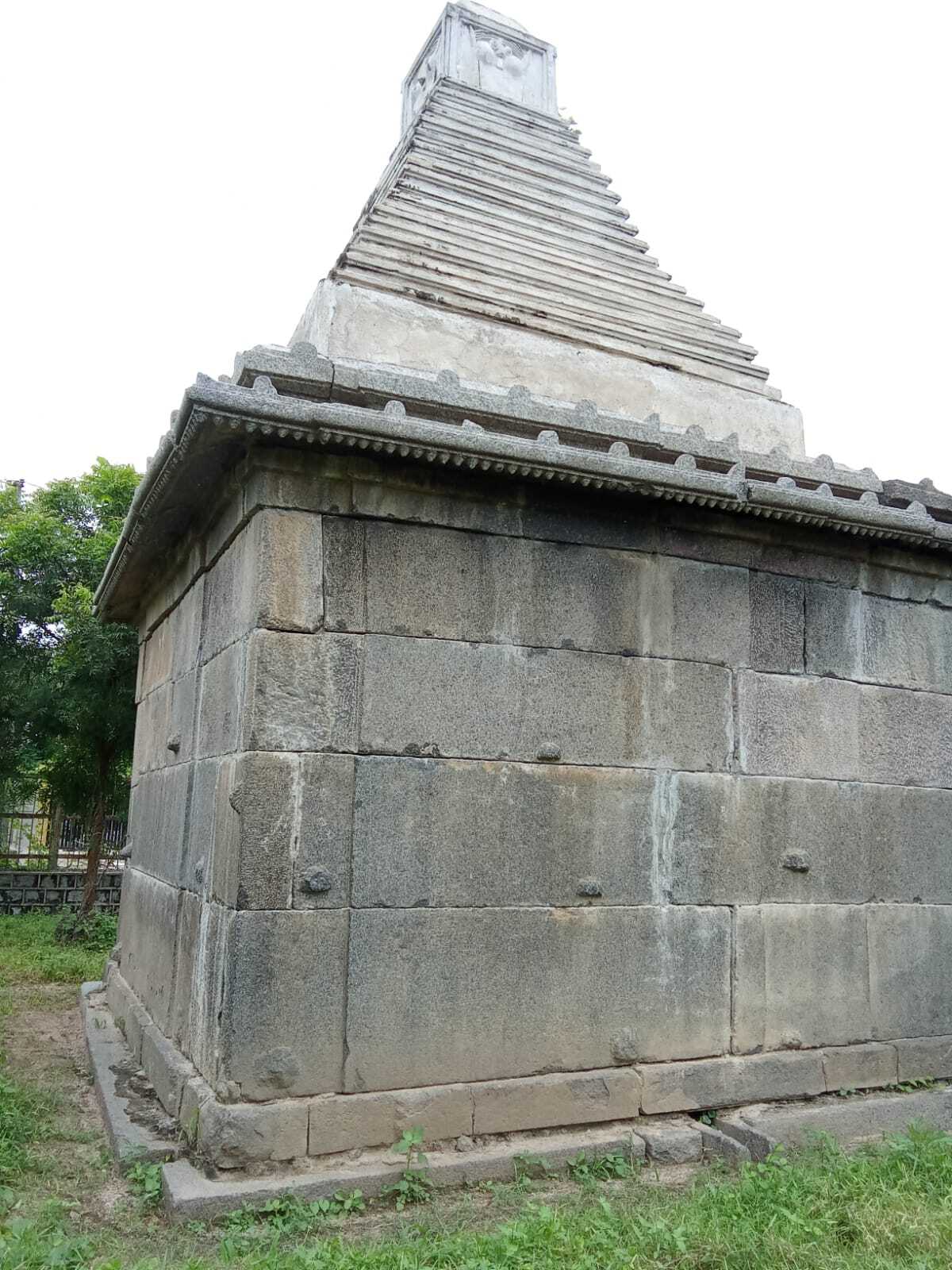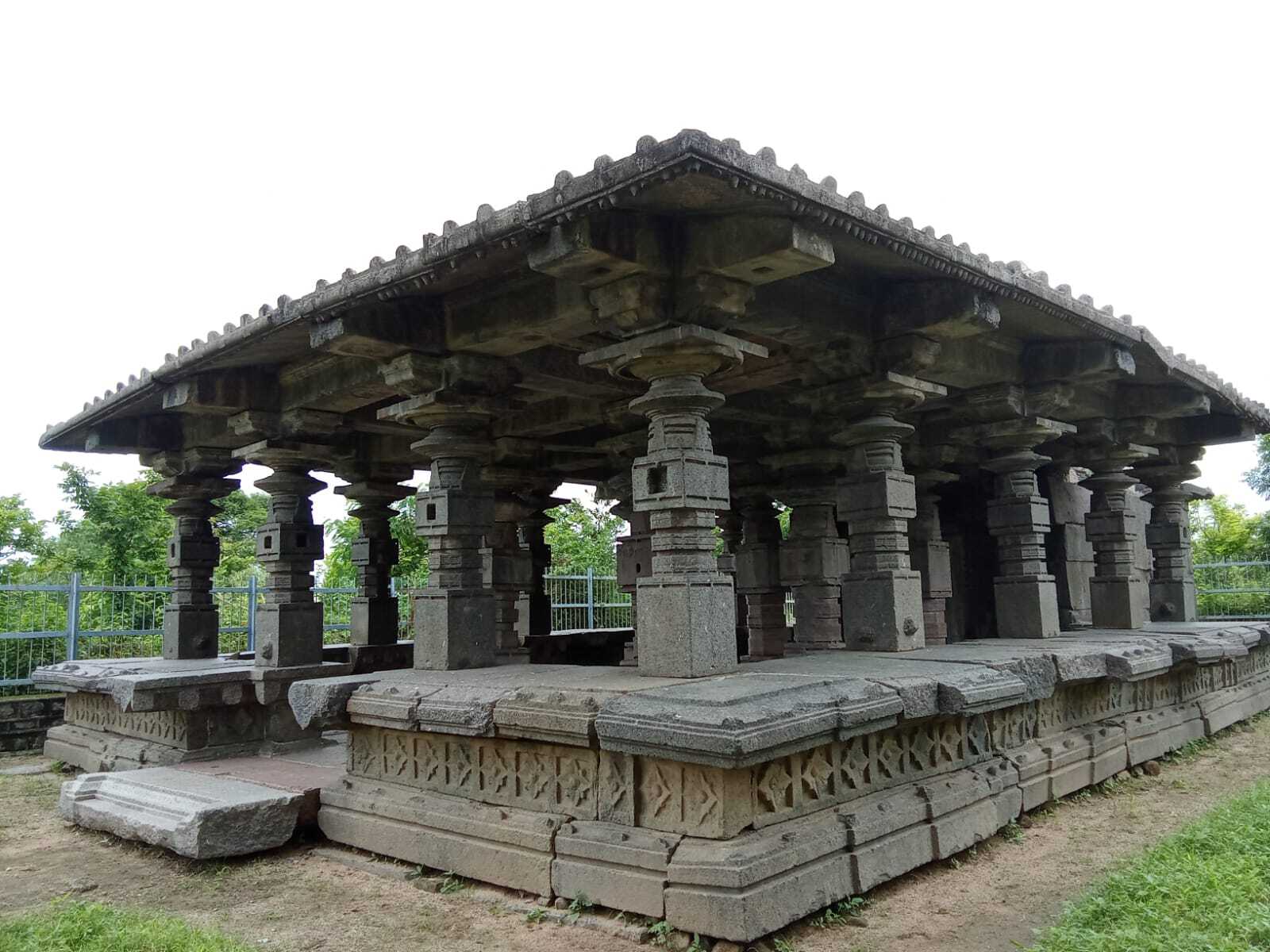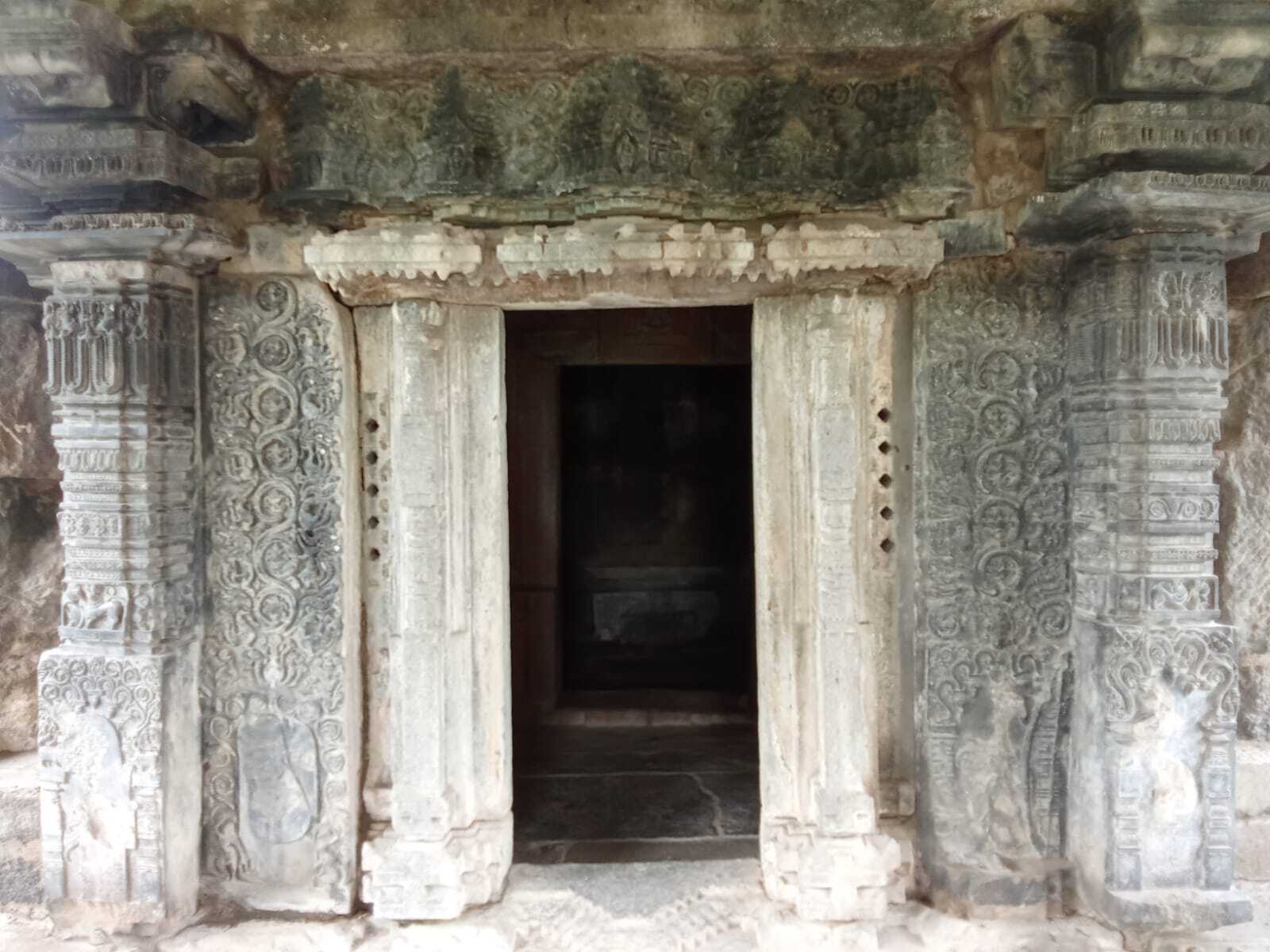Jangamaiah Temple

Jangamaiah Temple
The Jangammaiah Temple, built during the Kakatiya era, is a significant archaeological and historical site. As referenced in the ancient text Kridabhirama by Vinukonda Vallabharaya, the temple showcases several key architectural and cultural elements typical of the Kakatiya dynasty.
Historical Context
The Jangammaiah Temple, mentioned in Kridabhirama, highlights the importance of this site in understanding the architectural and cultural heritage of the Kakatiyas.
Temple Layout:
The temple complex is expansive, reflecting the grandeur typical of Kakatiya architecture. The layout includes a Mukha Mandapa (front hall), an Antarala (antechamber), and a Garbhagriha (sanctum sanctorum).
Shikharam:
Stepped pyramidal design typical of the era's architecture. It is constructed with stone blocks, showcasing the Kakatiya's distinctive temple architecture style.

Mukha Mandapa:
The Mukha Mandapa serves as the entrance hall and is a prominent feature of the temple. It is supported by sixteen pillars, showcasing the architectural style and stone-carving techniques prevalent during the Kakatiya period. The pillars often feature intricate carvings and motifs, reflecting the artistic skill of the era.

Antarala and Garbhagriha:
The Antarala acts as a transitional space between the Mukha Mandapa and Garbhagriha. The Garbhagriha is the innermost sanctum where the deity resides, serving as the focal point for worship. The structure and design of these elements are crucial for understanding the religious practices and architectural norms of the Kakatiya period.

Dwarapalas (Guardian Sculptures):
The temple features two massive sculptures of Dwarapalas (or temple guardians) at the entrance. These figures are characteristic of Kakatiya style, often depicted with elaborate attire, weaponry, and intricate detailing. The Dwarapalas serve not only as decorative elements but also as protectors of the sacred space.
Architectural Significance
The architectural style of the Jangammaiah Temple reflects the broader trends of Kakatiya temple architecture, known for its distinctive features such as star-shaped platforms, richly carved pillars and extensive use of stone. The temple’s design and construction techniques provide insights into the engineering skills and aesthetic sensibilities of the Kakatiya craftsmen.
Cultural and Religious Significance
The temple serves as a testament to the religious and cultural practices of the Kakatiya period. It provides valuable information about the deities worshipped, the rituals performed, and the socio-religious context of the time.
Did you like this ?